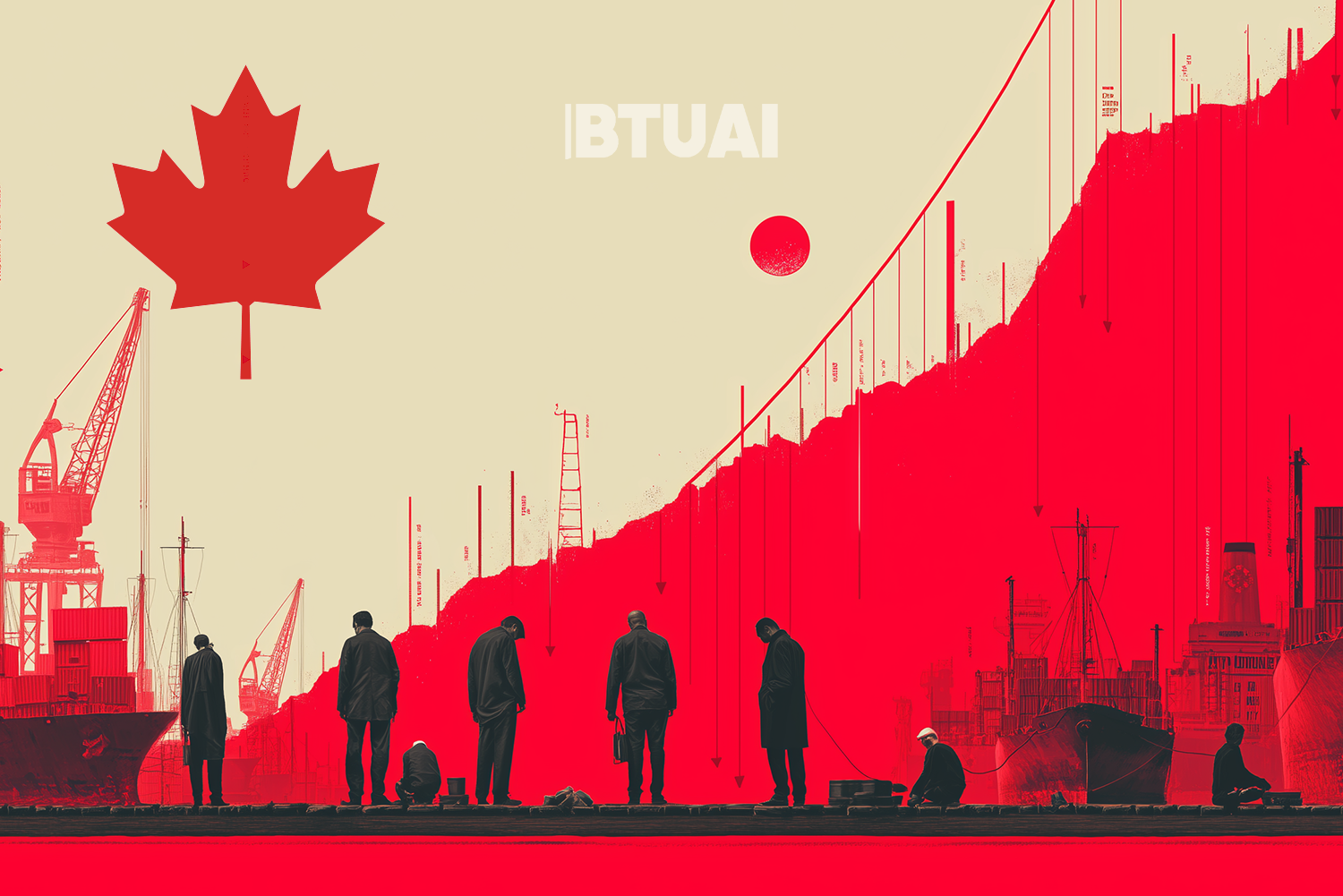Cracks in Canada’s Economy: On the Brink of Recession Amid the Trade War
Canada’s economy is gradually weakening under the pressure of the trade war, which the U.S. administration, under President Donald

Canada’s economy is gradually weakening under the pressure of the trade war, which the U.S. administration, under President Donald Trump’s leadership, has intensified by imposing strict tariffs against its closest trading partners. Although Canada was formally spared the harshest customs measures, the peripheral effects of the tariffs are so strong that the country has already begun losing jobs, seeing business activity slow, and experiencing a decline in consumer confidence.
It appears that the tariff shock is directly impacting the economy. In March, Canada lost 33,000 jobs — the worst figure in the past three years. Against this backdrop, surveys by the Bank of Canada show that 32% of businesses now expect a recession within the next 12 months, nearly double the figure from the second half of last year. Companies are gradually freezing new hiring, cutting investments, and predicting price increases — at the consumer’s expense.
The tariff impacts have been especially hard on Canada’s automotive sector, which, after energy products and metals, is one of the country’s largest export sources to the U.S. The 25% customs duty imposed by President Trump on foreign automobiles has already affected workers in the sector: automaker Stellantis temporarily shut down a plant in Ontario, leaving 4,600 workers temporarily unemployed. In response, the Canadian government is trying to soften the blow through temporary financial support, including considering funding American carmakers that assemble vehicles in Canada — a kind of “emergency zone” until a new agreement can be reached between the two countries.
From a fiscal policy perspective, the situation is also complicated. Budget balancing is now burdened both by social support packages and by countermeasures in response to tariffs. Prime Minister Mark Carney, who is currently in the midst of an election campaign, is trying to inspire hope that Canada can balance internal pressures and the risk of an American recession. However, he also acknowledges that a slowdown in the U.S. economy will directly impact Canadian exports.
In response to the aggressive American policies, Canada has introduced tariffs on more than $40 billion worth of U.S. goods — including wine, liquor, peanut butter, and machinery. The most recent countermeasure was a 25% tariff on cars manufactured outside the framework of the USMCA agreement, which could affect about 67,000 vehicles.
Financial institutions are closely monitoring the situation. Desjardins Group economist Royce Mendes predicts that the expected rise in prices, a direct result of tariffs, will force the Bank of Canada to halt further interest rate cuts. It is noteworthy that interest rate reductions had begun last June, and amid ongoing economic volatility, they are unlikely to resume unless the functioning of the financial system faces a serious threat.
Overall, Canada’s economic condition has become a significant example of how tariff-based policies affect not only major industries but also the broader landscape — impacting consumers, retirees, and small businesses. The fear is no longer limited to statistics — it has seeped into daily life: rising store prices, deteriorating sentiment among car manufacturers, and the erosion of household financial stability have become the new reality. And while Ottawa is trying to mitigate the pain through financial stimulus packages, the long-term outlook demands much deeper structural political reassessment than temporary anti-crisis measures can provide.




